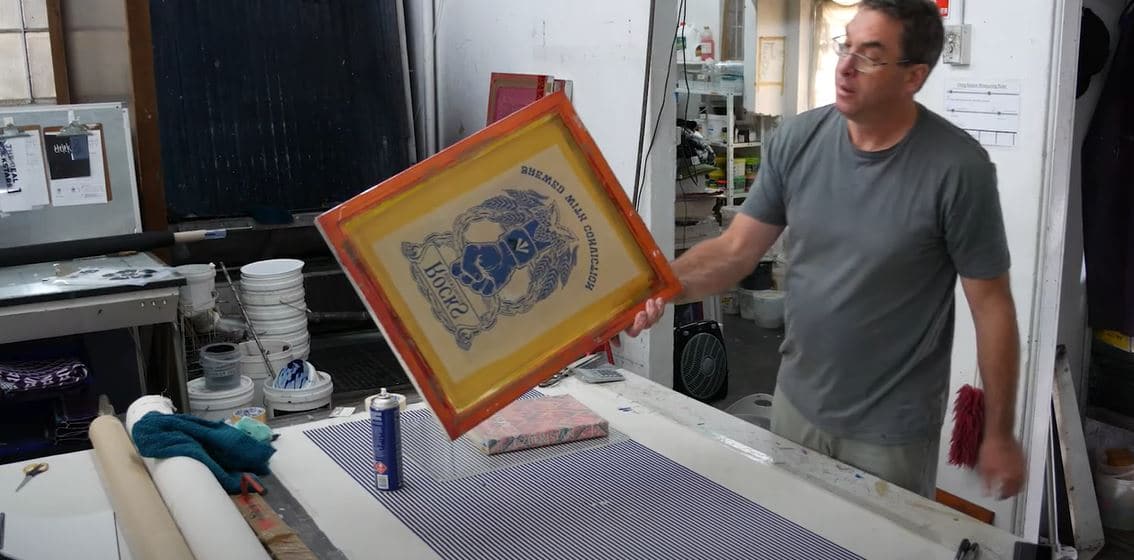The Essential Overview to Understanding Screen Printing and Its Versatile Utilizes
Screen printing has a rich background that goes back to old times, progressing right into an advanced method used across different sectors today. This overview checks out the intricacies of the screen printing process, outlining its applications in style, marketing, and home décor - 10:9 Design Abilene. Recognizing these basics can open up imaginative capacity for both business and creative tasks. The following areas will certainly disclose crucial ideas and methods to improve one's screen printing endeavors
The Background of Screen Printing
Although screen printing has origins that map back centuries, its development reflects the technical and creative advancements of numerous cultures. Originating in old China, the method was initially utilized for embellishing fabrics and later infect Japan, where it ended up being indispensable to Ukiyo-e woodblock printing. The technique shifted to Europe in the 18th century, where it gained appeal among artisans and business printers. The development of image emulsion in the 20th century reinvented screen printing, permitting more complex designs and greater efficiency. Artists like Andy Warhol better pushed its appeal, using the tool to develop legendary works that combined commercialism and great art. By the late 20th century, screen printing had actually developed itself as a flexible technique, used in style, marketing, and art. Today, it remains to progress, integrating digital modern technology and broadening its applications across different industries.
The Screen Printing Refine Explained
Screen printing changes creative visions right into tangible designs with a collection of precise actions. Originally, an image is created and afterwards moved onto a screen, generally made from fine mesh textile stretched over a framework. A light-sensitive emulsion is used to the screen, which is revealed to light, hardening in locations not covered by the picture. After rinsing the unhardened emulsion, a stencil is created.
Next off, the screen is placed over the substrate, whether it be fabric, paper, or an additional product. Ink is after that pressed through the open areas of the stencil making use of a squeegee, depositing the style onto the substrate below. This procedure can be duplicated for multiple colors, requiring different screens for each color. The published thing is treated making use of heat to guarantee the ink sticks correctly, resulting in a resilient, lively design prepared for use.
Kinds Of Screen Printing Techniques

Furthermore, specialized strategies, such as discharge screen printing, remove color from the textile to develop softer prints, while aluminum foil screen printing applies metallic aluminum foil to achieve a shiny coating (10:9 Design Abilene). Each method uses distinctive qualities, satisfying different creative demands and production ranges, inevitably broadening the possibilities within the screen printing domain
Applications of Screen Printing in Numerous Industries

In addition, the signs and advertising and marketing markets use screen printing for producing captivating displays and banners. This approach permits vibrant shades and detailed designs that capture interest. In electronic devices, screen printing is utilized for applying conductive inks to circuit card, necessary for part connections. Additionally, the home style sector accepts screen printing to create unique styles on textiles and wall surface art. In general, screen printing serves as a critical tool across diverse fields, enhancing items with personalized and aesthetically attractive graphics.
Tips for Effective Screen Printing Projects
While embarking on a screen printing task, cautious attention to detail can significantly enhance the final end result. Picking high-quality materials is necessary; this consists of the screen, inks, and substratums. Utilizing proper mesh matters can influence ink deposition and information resolution. Preparation is just as crucial; thorough cleansing of displays and correct direct exposure times assure crisp prints.
Next off, exact registration is essential for multi-color prints. Using alignment devices can help achieve exact layering. Additionally, screening prints on scrap products before manufacturing helps recognize possible problems without squandering sources.

Often Asked Concerns
What Products Are Best for Screen Printing on Material?
Cotton and polyester blends imp source are excellent for screen printing on textile because of their resilience and ink absorption. Additionally, specialty materials like silk or canvas can create special structures and finishes, enhancing the overall design high quality.
Just how Do I Tidy and Maintain Screen Printing Devices?
To maintain and clean screen printing equipment, one must on a regular basis clean screens with suitable solvents, inspect squeegees for wear, lubricate moving parts, and shop all items in a dry, dust-free atmosphere to lengthen their life expectancy.
What Are the Ecological Influences of Screen Printing?
Screen printing can have substantial environmental impacts, consisting of chemical waste from solvents and inks, water usage throughout cleansing processes, and energy usage. Environment-friendly materials and lasting techniques are crucial for lessening these negative effects.
Can Screen Printing Be Done at Home Successfully?
Screen printing can be effectively done at home with the right products and methods. Enthusiasts can develop high quality prints, though success relies on their skill level, tools, and understanding of the process involved.
What Are the Costs Related To Beginning a Display Printing Organization?

Starting a screen printing company entails expenses for tools, materials, and work space. Initial expenditures commonly vary navigate here from a couple of hundred to a number of thousand dollars, depending upon the scale, high quality of machinery, and preferred production ability.
Screen printing has a rich history that dates back to ancient times, developing into a sophisticated method made use of throughout numerous markets today. Another technique, rotating screen printing, employs round screens, helping with constant printing on material rolls, thus enhancing efficiency for massive productions. Additionally, specialized techniques, such as discharge screen printing, remove color from the fabric to create softer prints, while aluminum foil screen printing applies metallic foil to attain a glossy coating. In the style industry, screen printing is widely utilized to create dynamic designs on clothing, making it possible for brand names to showcase their distinct designs. Cotton and polyester blends are optimal for screen printing on material due to their durability and ink absorption.